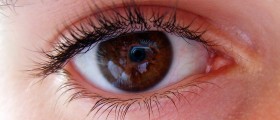
Why does Chronic Dacryocystitis Occur?
The condition generally develops if there are certain predisposing factors. Obstruction of the drainage of tears and consequent inflammation develops due to concretions i.e. collections of cancer cells or fungal colonies which form around foreign bodies such as lashes or stricture of the wall of the lacrimal sac. In menopausal women the condition may result from congestion due to the presence of erectile tissue at the lower end of the lacrimal sac. Tumors and polyps of the sac or nearby organs may be also responsible for chronic dacryocystitis.
Clinical Characteristics of Chronic Dacryocystitis
Patients suffering from chronic dacryocystitis develop recurrent epiphora (overflow of tears), swelling, tenderness and redness of the skin of the inner corner of the eye. If one presses the inner corner of the eye it may be possible for him/her to express mucoid discharge.
Diagnosing Chronic Dacryocystitis
In order for a doctor to confirm the presence of obstruction he/she must perform several tests and exams. Fluorescein clearance test and John's dye test are excellent means for this purpose. Further investigation (probing, lacrimal irrigation with saline and lacrimal irrigation with saline and adrenaline) will reveal the exact site of blockage. Radiography is also highly suitable for visualizing obstruction, potential bone lesions and malfunction of certain structures. And finally, dacryocystography may show obstruction caused by tumors and strictures. Ear, nose and throat examination is of help when it comes to identifying the underlying cause of the condition. Treatment for Chronic Dacryocystitis
Treatment for chronic dacryocystitis depends on the underlying cause of the condition. Dacryo-cysto-rhinostomy is a procedure during which the doctor creates a permanent artificial canal between the lacrimal sac and the nasal cavity. This surgery efficiently deals with both, obstruction and chronic infection. Unfortunately, the procedure cannot be performed in case of malignancy of the sac, specific dacryocystitis such as tuberculous or syphilitic dacryocystitis. Dacryo-cysto-rhynostomy is also contraindicated in malignancy of the nose, specific rhinitis and rhinoscleroderma and atrophic rhinitis. Very old patients as well as the presence of mucocele and lacrimal fistula are considered relative contraindications to the procedure.
One more surgical procedure in treatment for dacryocystitis is dacryocystectomy. It includes excision of the lacrimal sac and eradicates the infection. However, dacryocystectomy is not a solution for epiphora which may remain. This surgical procedure is done when dacryo-cysto-rhinostomy is contraindicated.

















Your thoughts on this
Loading...